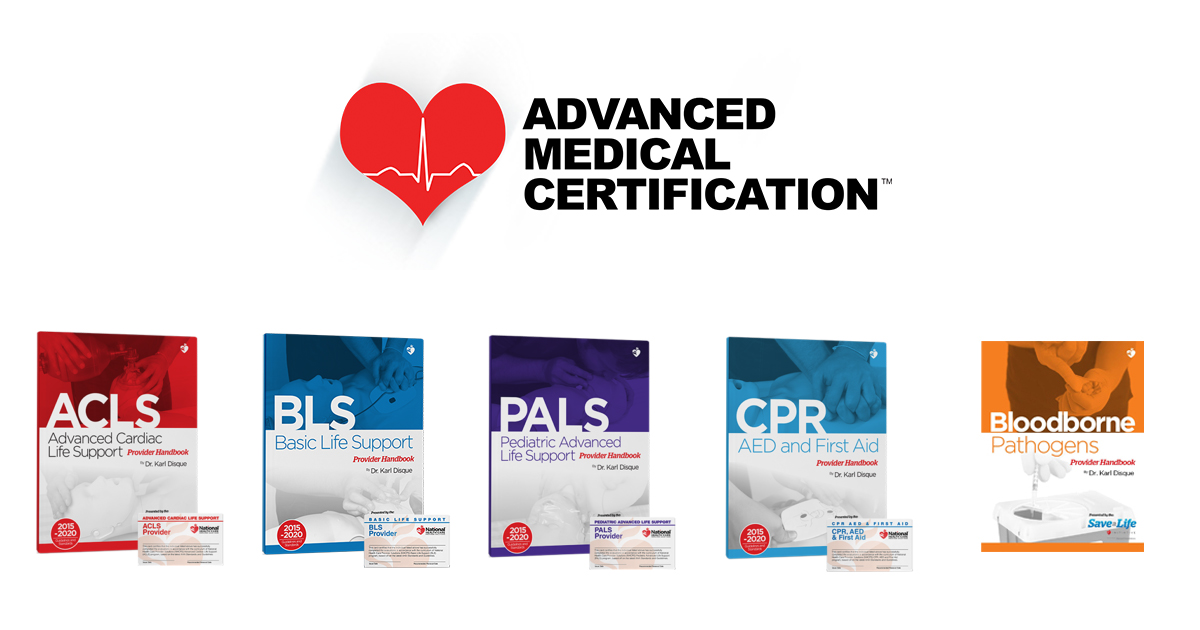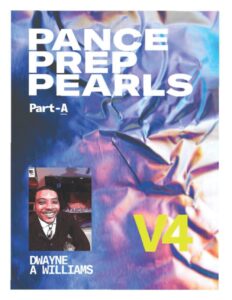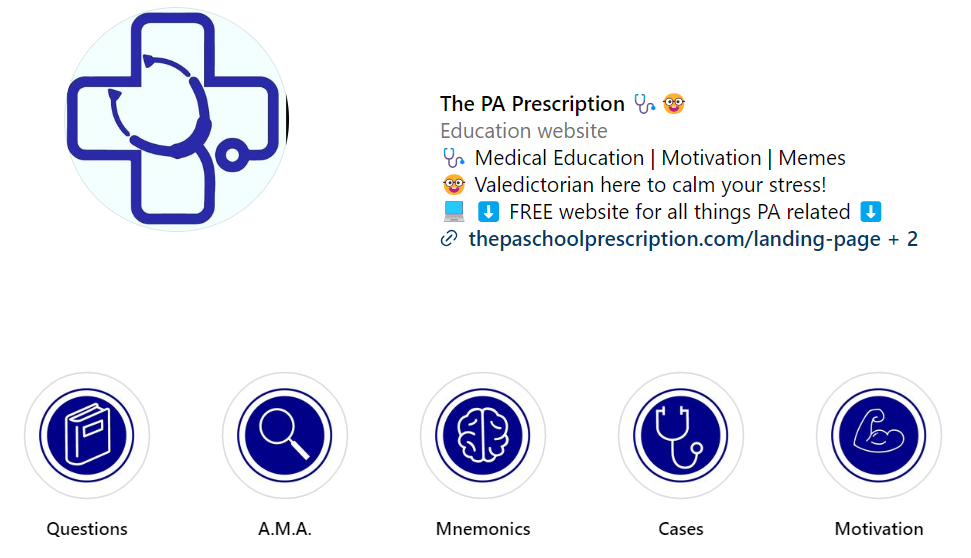
Today in 10 minutes or less you’ll learn:
- The CRISPR the better
- Stay Positive. Stay Motivated
- Top 5 Gift Ideas for PA students and Practicing PAs
- …I’m itchy all over but there is no rash!
The CRISPR the better!
CRISPR, which stands for Clustered Regularly Interspaced Short Palindromic Repeats, is a revolutionary gene-editing technology that allows scientists to selectively modify genes within an organism. It was adapted from the natural defense mechanisms of bacteria and archaea (the domain of single-celled microorganisms).
CRISPR technology has had a profound impact on various fields, including molecular biology, genetics, and medicine. It allows for precise and efficient gene editing, enabling researchers to study gene function, develop potential therapies for genetic disorders, and even modify organisms for various purposes.
I’m telling you this information because, in this article, the UK just approved the world’s first gene therapy treatment for sickle cell disease!
Here are the key takeaways from the article in bullet-point form:
- Researchers in the UK have approved the world’s first gene therapy, called Casgevy, to treat sickle cell disease using the Nobel prize-winning CRISPR gene editing technique.
- Casgevy was approved by the UK’s Medicines and Healthcare Regulatory Agency for patients 12 and older with sickle cell disease and thalassemia.
- The therapy works by editing the gene responsible for sickle cell and thalassemia in a patient’s bone marrow stem cells to produce normal hemoglobin.
- In clinical trials, 28 out of 29 sickle cell patients had no severe pain for over a year after treatment. 39 out of 42 thalassemia patients needed no blood transfusions for over a year.
- The approval is a breakthrough for sickle cell and thalassemia patients, who previously only had arduous bone marrow transplants as a cure option.
- The therapy could eventually provide relief for the estimated 15,000 sickle cell patients and thousands of thalassemia patients in the UK.
- The US FDA is expected to make a decision on approval soon. Cost and access will be important factors going forward.
Just here to remind you to keep your head up because it’s worth it!
Top 5 Gift Ideas for PA Students and Practicing PAs!
It’s that time of year again and even you deserve gifts during the holiday season!
Here are my top 5 gifts for PA students and Practicing PAs!
Medical Reference Books or Question Books:
Consider gifting a comprehensive medical reference book (my favorite is PANCE PREP PEARLS) or question books to help you feel more confident on the boards. If you want something less serious, but still educational, I recommend the book called “The Foreign Body.” It shows pictures of radiographs with foreign bodies, and you have to guess what the foreign body is. Then the author describes the stories on how they got there. Pretty funny.
Quality Stethoscope:
A high-quality stethoscope is an essential tool for any medical professional, including PA students. Investing in a reputable brand (my personal favorite is the Littmann Master Cardiology) can enhance their ability to perform accurate assessments during clinical rotations and beyond. Personalizing the stethoscope is always an amazing touch as well.
Subscription to Board Prep Online Resources:
The PA Prescription will only take you so far in your didactic year journey. If you are ready to start thinking about serious board prep, one of the best resources out there is SmartyPANCE. With a robust question bank, detailed explanations, and personalized study features, SmartyPANCE tailors your preparation for the Physician Assistant National Certification Exam. Its intuitive interface adapts to your learning style, offering real-time analytics to enhance your strengths and address weaknesses. Navigate the complexities of medical knowledge confidently, knowing SmartyPANCE is by your side. Elevate your board prep experience — choose SmartyPANCE for success on the PANCE or PANRE.
Comfortable Shoes:
PAs often spend long hours on their feet during clinical rotations. A pair of high-quality, comfortable shoes designed for healthcare professionals can help reduce fatigue and discomfort. My personal favorite is Clove. I wear a pair 6 times a week when I work and they are super comfortable, slip on without hassle, and super easy to clean. 10/10 would recommend.
Relaxation and Wellness Gifts:
It’s no secret that being a PA is super stressful. One of the best gifts, in my opinion, is an afternoon away from the books or clinic in a relaxing environment to rest. This could include items like a massage gift certificate or gift cards to the local spa.
| For Even More Gift Ideas Click Here |
I’m itchy all over but there is no rash!
As I’m running in and out of rooms during the “rush hour” of urgent care, I get to a 60- year-old female with normal vital signs with a chief complaint of intermittent diarrhea x 1 month and worsening full-body itching x 5 days.
First thought in my head, “1 month of symptoms?? Is this really urgent?”
I quickly put my bias aside and approach the patient with a positive, problem solving attitude.
The patient describes the nonspecific symptoms of diarrhea as intermittent with no associated symptoms. Denies any fever, chills, blood in stool, abdominal pain, recent antibiotic use or hospitalization, recent travel, history of atrial fibrillation, history of Crohns or Ulcerative Colitis, close contacts with similar symptoms, lightheadedness. (For full note template for myriad of complaints click here.)
“And this itching is unbearable! I don’t know what I did but it’s worse on my scalp and arms. Do you think it’s scabies.”
As I inspect the patient’s skin and scalp, I’m honest when I say I saw absolutely nothing on her skin. No punctate lesions, no nits, no papules, no vesicles, nothing. I continued questioning and was pretty stumped as the differential diagnosis is very wide.
I did a complete physical exam and there was nothing that stood out to me. Abdomen exam and skin exams were both unremarkable. I educated the patient on doing blood work to check her electrolytes and bilirubin to see if we can pinpoint the root cause of her symptom and also referred her to a GI specialist.
Remember the mnemonic for hypercalcemia? Stones, bones, abdominal groans, and psychiatric moans.
Also, I saw enough episodes of House M.D. to know that an elevated bilirubin level can cause pruritus of the skin.
Sure enough, her electrolytes were very abnormal and her bilirubin was moderately high. The after-hours team of the practice advised the patient to go to the ER where she was treated for her electrolyte derangement and imaging was performed to determine why her bilirubin was so high.
Any guesses?
I called the patient on my next shift for an update as I saw the abnormal labs. Sad to hear, but she said she had a pancreatic mass. Just like the previous newsletter, my heart hurts knowing that the patient’s prognosis is not the best for this kind of diagnosis.
Teaching Point:
Pancreatic cancer can obstruct the bile duct, preventing the normal flow of bile from the liver to the intestines. This obstruction leads to the accumulation of bilirubin, a component of bile, in the bloodstream. Elevated bilirubin levels can cause jaundice, a yellowing of the skin and eyes, and can contribute to itching, or pruritus.
Thats all for today.
Thanks for reading,










